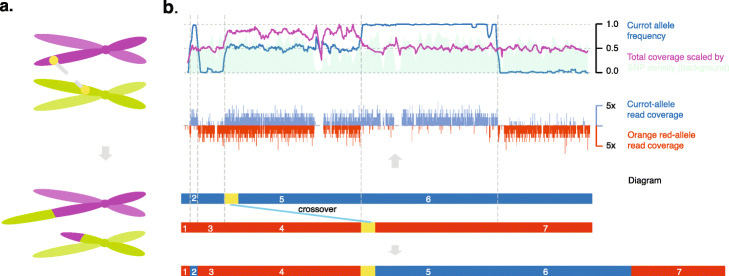Fig. 6.
Non-allelic crossovers and its consequences. a Illustration of a non-allelic crossover which results in a chromosomal anomaly. b Analysis of a single-pollen nuclei, which revealed a non-allelic CO resulting in the duplication of a large chromosomal segment. The short-read alignments of a haploid nucleus revealed a pseudo-heterozygous region with increased read coverage, which is the hallmark of a long duplication specific to this genome. All other chromosomes were haploid (not shown). Top row: “Currot” allele frequency, SNP density (in sliding windows of 500 kb at a step of 50 kb), and read coverage scaled by SNP density. Middle row: count of “Currot” or “Orange Red” alleles at SNP markers. Bottom row: diagram illustrating how a non-allelic CO in transposed regions (as indicated by yellow rectangles) resulted in a large duplication, i.e., the original homologous chromosomal regions labeled with “4” and “5” are now part of the same newly formed chromosome

